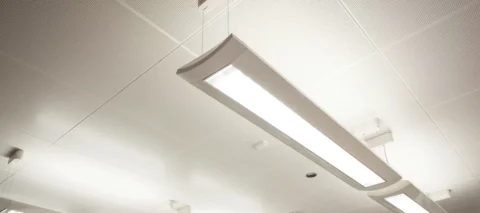The cosmetic surgery industry continues to grow every year, but surgical nose jobs have experienced a significant hit over the last few years. Part of this is because more patients are opting for the increasingly popular non-surgical nose job, made more effective and accessible with Botox (source).
So what does Botox do for your nose? Botox is a muscle relaxant that is injected directly into the depressor septi nasi muscle, a muscle in the nose that pulls the sides of the nose downward, making it look fatter and droopy. Botox eases the pull of the depressor septi nasi, freeing your nose and creating a perkier look.
Botox and the Nose
What is Botox?
Botox or botulinum toxin is a neurotoxin created by the Clostridium botulinum bacterium, and has been used since the late 1970s to treat various muscular conditions and other ailments, such as migraines, excessive sweating, and bladder disorders.
Botox operates on the same principles in all applications: it is used to paralyze muscles in the body. While this can be dangerous when taken in larger doses, Botox as a cosmetic and medical treatment is safely used by millions every year.
What Makes an “Attractive” Nose?
Patients seeking treatment for their nose may not always be aware of exactly what is wrong. In general, an “attractive” nose is one that rests in the middle third area of the face, occupying a space proportional to other facial features.
The nose itself must have a tip that is neither too pinched nor too wide; at its tip, it should round off without a hook. The tip should also not be too flat, extending a certain amount from the face. The bridge of the nose should not be crooked; just straight or close to straight.
Finally, the nostrils must not flare too much, and the base should angle away from the face symmetrically on both sides.
What Does Botox Do to the Nose and the Nose Tip?
The nose contains three separate muscles, with the depressor septi nasi muscle located right beneath the nose, coming out of the upper jaw or behind the upper lip.
Botox injected in the nose is aimed specifically at the depressor septi nasi muscle, as this muscle naturally acts as an anchor to the nose, pulling it down and constricting its wings.

The injected Botox acts to paralyze the depressor septi nasi muscle, allowing the nose to perk up. A single treatment of injected Botox can take anywhere from 2-4 units of Botox, and lasts up to 4-6 months.
Why Might You Need Botox For Your Nose?
Aside from clearing up obvious nose droopiness, here are some ways Botox can improve the overall look of your nose and surrounding area:
1) The Bunny Line
As you get older, you might notice a growing horizontal line that sits just across the side or ridge of the nose.
Bunny lines are generally most prominent during facial expressions that heavily involve the mouth and lips, such as frowning or laughing.
What causes bunny lines? Bunny lines are a result of the repeated contraction of one of the three muscles in the nose, the nasalis. The nasalis keeps the nose’s cartilage compressed; a weaker nasalis coincides with flaring nostrils.
Bunny lines slowly become more prominent over years of repeated facial expressions.
They can also be created by previous Botox treatments on the face. Botox injections for other areas such as the forehead can cause more stress on the nasalis muscle, as it forces this muscle to pick up the slack of the paralyzed facial muscles.
To treat bunny lines with Botox, doctors inject roughly 4-8 units of Botox along the side of the nose, right where it meets the cheek.
2) Droopy Nose Tip
The droopy nose tip is the most common reason why patients might seek out non-surgical nose jobs with Botox. This is caused by the depressor septi nasi muscle, which increasingly pulls the nose down from the upper lip as we age.
To treat the droopy nose tip, doctors inject an average of 2-4 units of Botox right underneath the septum of the nose. This paralyzes the depressor septi nasi muscle, resulting in the nose having a lifted and lighter look.
3) Excessive Nasal Flare
For patients who are unhappy with the large size or frequency of their nasal flaring, injections of 4-20 units of Botox along both sides of the nose can help to fix this. The Botox keeps the nostrils from expanding too widely, and this effect can last up to 4-6 months.
Non-Surgical Nose Treatments

Botox isn’t the only option for non-surgical nose jobs, but it also doesn’t have to be a choice. Botox for the nose can work on its own, but it can also be applied alongside other non-surgical nose job options. These alternative treatments include:
- Nose Fillers: Nose fillers or dermal fillers include products such as Juvéderm, Belotero, and Restylane. These work by filling in the nose, providing the desired shape and a more distinct nasal contour. Crooked noses can be “straightened” by filling out other areas of the bridge, turning the crooked surface straight. These products usually include calcium hydroxyapatite or hyaluronic acid (source).
- Embedded Protein Threads: This treatment involves polydioxanone threads placed beneath the nose’s skin. This is used to try to create a nose contour by stimulating the nose’s natural collagen production.
The type of non-surgical nose treatment depends most importantly on your desired outcome. Consult with your doctor or dermatologist about your ideal nose, and how you can use Botox alone or combine Botox to achieve it.
Learn more about dermal fillers and Botox cosmetic at My Ethos Spa.
Why Non-Surgical Nose Jobs Over Surgical Nose Jobs
The rise in popularity of non-surgical nose jobs over traditional surgical nose jobs or rhinoplasties is down to more than just hype. There are several reasons why a patient will benefit more from the non-surgical approach. These include:
1) Fewer Risks, Same Results
Traditional surgical rhinoplasty can be a heavy ordeal, with a physical reshaping of the bone. This can be incredibly painful while also demanding a month-long recovery time. What’s more, the results of a rhinoplasty are not guaranteed; a patient may go through all the hassle and discomfort of surgery and recovery just to see a less-than-ideal outcome.
With non-surgical procedures, there is virtually no major downtime and much fewer risks. Generally, the procedure is much less of an event, taking just 5-10 minutes per session. With topical numbing cream applied before the injections, the patient should experience no pain.
2) Temporary Treatments
While some may claim that the temporariness of non-surgical rhinoplasties is a weakness of it, many patients and doctors believe otherwise. With results that last several months, patients are free to change their nose or experiment with their non-surgical nose job needs.
Surgical nose jobs produce permanent results, meaning any treatment you get is the one you must live with (unless you wish to undergo surgery and recovery again). In many cases, patients come in for dermal fillers and Botox for nose to help correct rhinoplasties that have gone wrong.
Botox for Nose at My Ethos Spa
Botox for your nose and other nose fillers require expert hands with years of expertise. Have confidence in your non-surgical nose job by choosing a practitioner with hands you can trust.
At My Ethos Spa, we have worked with countless patients for their Botox non-surgical nose job. Contact us today and learn how we can help you achieve your ideal nose.







